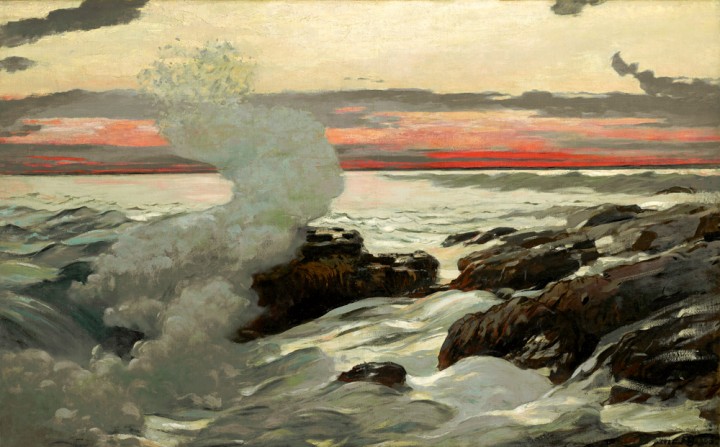Winslow Homer | New England’s Gifts
Prouts Neck thrusts out into the Atlantic, exposed on three sides to the water and completely exposed to easterly storms, and the rugged, weatherbeaten rocks show the effects of the pounding surf. It was here that Winslow Homer was most at home for the last 27 years of his life. He captured the storm-whipped Maine […]

Winslow Homer (1836–1910), West Point, Prout’s Neck, 1900 (oil on canvas)
Photo Credit : Sterling and Francine Clark Art Institute, Williamstown, Ma/ Bridgeman Images
Photo Credit : Sterling and Francine Clark Art Institute, Williamstown, Ma/ Bridgeman Images
Prouts Neck thrusts out into the Atlantic, exposed on three sides to the water and completely exposed to easterly storms, and the rugged, weatherbeaten rocks show the effects of the pounding surf. It was here that Winslow Homer was most at home for the last 27 years of his life. He captured the storm-whipped Maine coast in winter like no other artist, exulting in the foul weather.
It was during the long Maine winters that Homer created such powerful works as Winter Coast and The West Wind, with great waves towering over a high cliff; the frigid stillness of near-zero weather; bleak rocks encased in ice and snow. At a time when most American painters were lulled by nature’s gentler climes, one Homer biographer reminds us that “when skies threatened and the wind rose and the great waves came swinging in to hurl themselves against the cliffs, he was in his element.”
—“Perfectly Grand in Prouts Neck,” by Craig Fisher, February 1996


